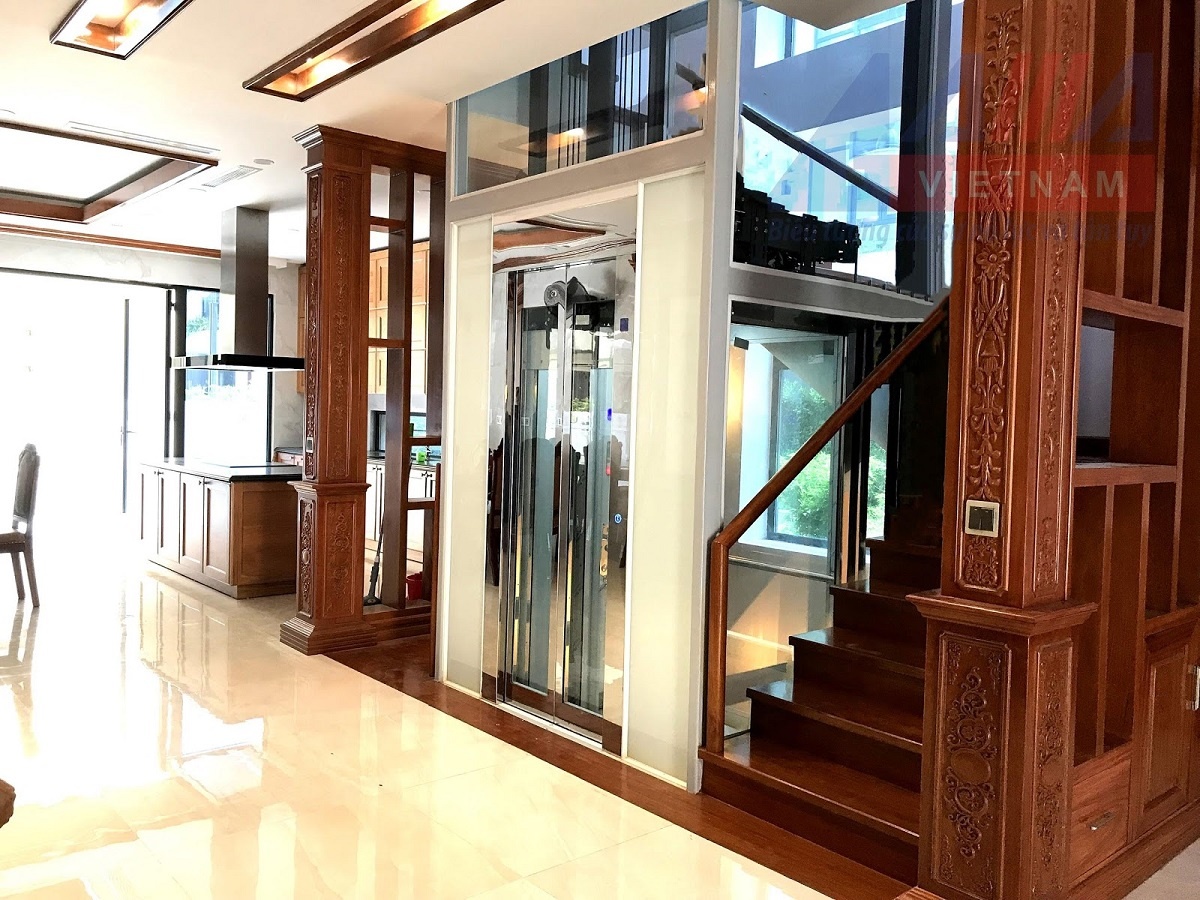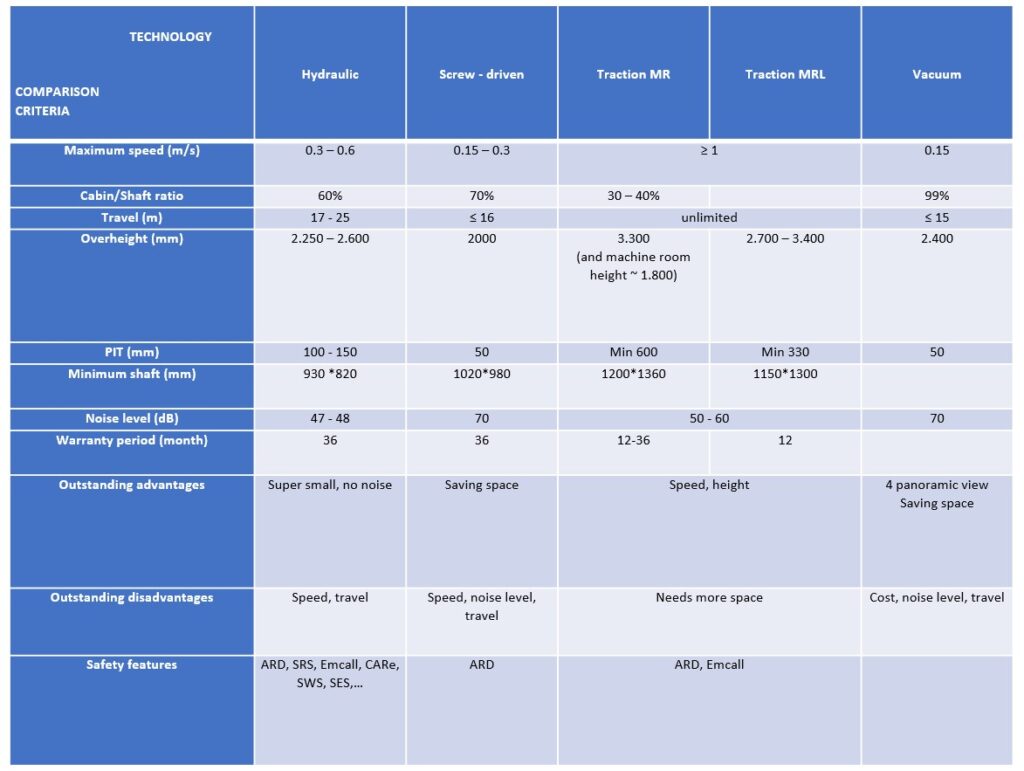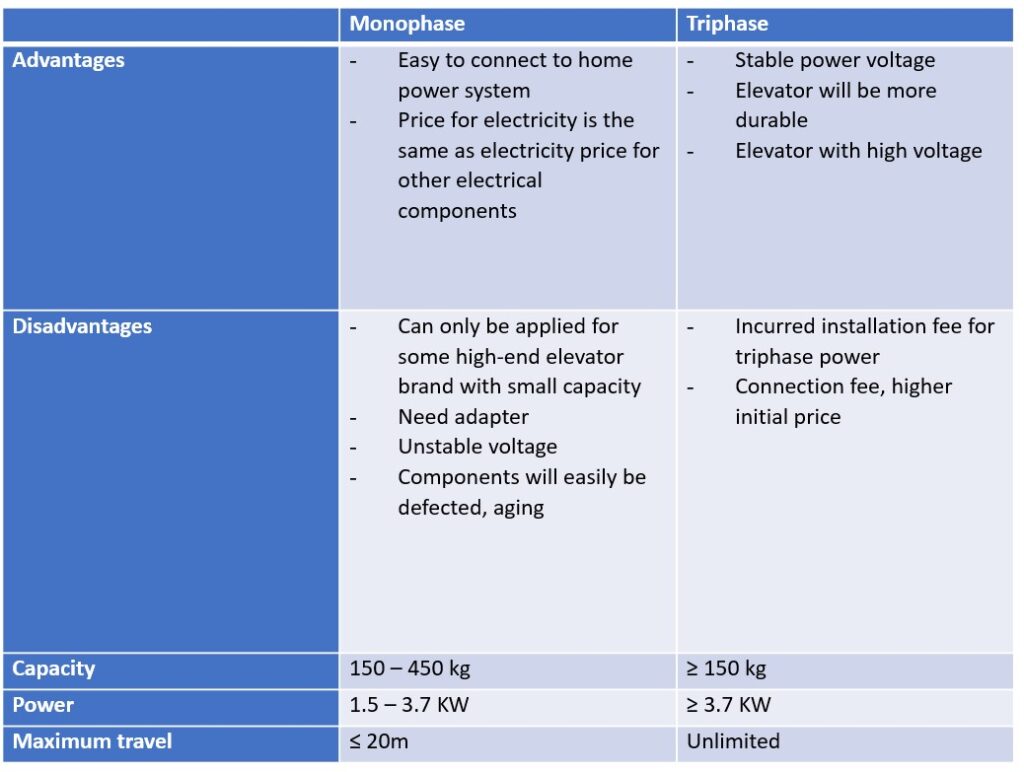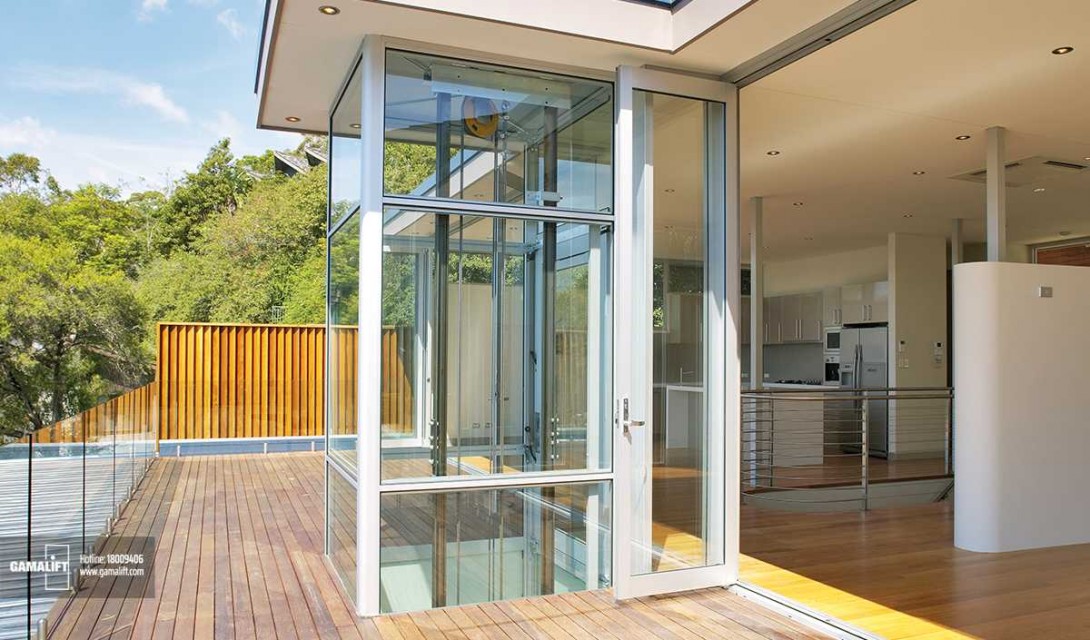Elevator installation and design standards need to comply with National Standard TCVN 7628-1:2007. However, not all consumers can clearly understand the specialized terms specified in this standard, so experts from Vietnam Institution of Lift Engineering Application share 5 factors to consider when you choose and design elevators for houses.
1. Purpose of Use
In foreign countries, the concept of “homelift” is only for houses has 3 floors and below, with a speed of about 0.15m/s. But in Vietnam, the concept of a homelift is understood as an elevator in a private house (can be up to 8 to 9 floors). Therefore, choosing lift which has suitable design for the intended use is very important. If you choose wrongly, you will be regret your whole lift because unlike car, you cannot sell elevator again.
We have temporarily broken down a number of private home use goals to choose a lift:
– Private house: If the house is for living purpose only then all 4 elevator technologies can be chosen: Traction, hydraulic, screw-driven, vacuum lift. Obviously, it also depends on floor number or height. We will analyse further in technical part below.

Hydraulic home elevator for residential use
– Housing combined with rental: For this use, the frequency of use is much higher than before. Therefore, you must choose technology with high speed, relatively high number of starts/hour such as traction lift or hydraulic lift.
– Offices for rent, shops: In luxury and low-rise offices (2-3 floors), we can choose hydraulic or screw-driven lift. As for the high-rise buildings for rent, the travel demand is high, the number of starts/hour is very high, so the only technology should be selected is traction lift
2. Technical specifications
In this section, we present a table of technical specifications of 4 types of technology (e.g. shaft area, travel, maximum speed, safety features, …) for you to choose from:

*Note: Traction MR (Machine room): Traction lift with machine room. Traction MRL (Machine room Less): Traction lift without machine room.
Thus, according to the table above, we can conclude that:
– If the area is less than 1m2, you only have 2 options: hydraulic, vacuum lift.
– If the PIT is less than or equal to 15cm; OH is less than or equal to 260cm, then choose hydraulic, screw-driven, vacuum lift.
– Speed: Hydraulic lift with speed ≤ 0.6m/s. Screw elevator ≤ 0.3m/s. Traction lift with speed ≥ 1m/s
– The allowed number of starts/hour of hydraulic, vacuum, and screw lifts is low, so it is only suitable for private houses or low-floor shops. As for houses in combination with rentals with a very high frequency of use, a traction lift should be chosen.
– An elevator that is designed in accordance with international standards and regulations, is fully supervised, is installed according to the correct process is also safe, but thanks to the advantage of technology, hydraulics is considered the safest elevator.
3. Power supply
Home lifts are designed to be able to use triphase or monophase power. The following table breaks down a few things to keep in mind:  4. Durability
4. Durability
Assuming all elevators are manufactured according to standard rules and materials, in principle, durability of components can be considered on 2 factors:
– Abrasion causes friction.
– The aging of components, electronic equipment events.
Therefore, although we do not have complete statistics, we believe that:
– The aging of electronic components in 4 types of technology is the same.
– Traction and screw-driven lift will be affected by friction greatest
– Hydraulic and vacuum lift have the lowest frictional wear, so it can be assessed as the lowest (for vacuum lift, the pressure fan system may have to be replaced soon).
5. Installation location
About aesthetics: If the choice of lift based on which lift is the most aesthetic, easy to install, then hydraulic, screw, vacuum lift are the best choices because of the beautiful design, variety, small size, easy to arrange, no need to renovate house, no need to renovate the machine room, no need for PIT.
Regarding environmental factors, it is necessary to pay attention to the factors of installing elevators indoor or outdoor:
– Indoor: There is not a problem for all types of technology.
– Outdoor:
+ You need to pay attention to the greenhouse effect. Because it is different in Vietnam than in Europe, when surveying the installation location, attention must be paid to the greenhouse effect. For example, in the West direction, you should absolutely avoid or choose a shady location because the prolonged sunshine causes the cabin to heat up. If not, you should choose a shady location because if you have to apply insulation, it will be extremely expensive.
+ When there is direct light, the optical sensors that perceive the floor may be disturbed (infrared type) or magnetically degraded (for magnetic sensors) and rapidly aging of components and equipment.

Outdoor homelift with glass design, passenger can enjoy the landscape
+ A special note: Air conditioners should not be used for homelift as designed for public elevators. Because the time to use the home elevator is short, when someone enters the air conditioner, it will not cool enough, if it is turned on continuously, it will waste electricity (public elevators will travel continuously, the air conditioner will run continuously). An effective way is to install a louver to blow into the well or handle good ventilation.
+ When designing additional elevator outside the house, pay special attention to waterproofing, leakage and expansion, settlement and cracking between the two blocks in the long run.
Above is the overall opinion of experts. If you need specific problems, you can directly contact an expert of Vietnam Institution of Lift Engineering Application (Phone number: 02473099868) for free consultation support.



